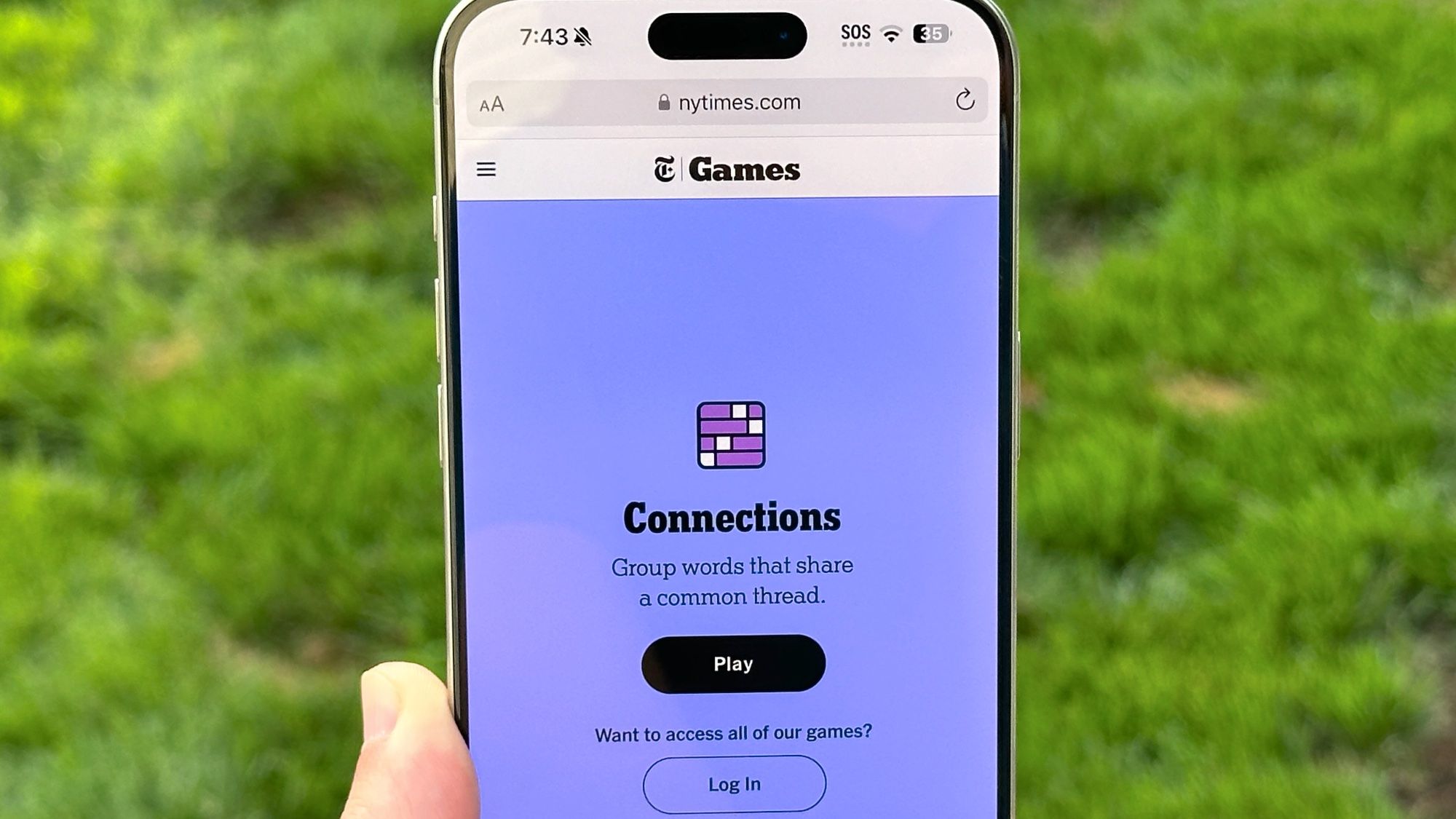Unlock 5 Brilliant Strategies from NYT Connections Puzzles #760 and #761 to Boost Your Skills. Discover expert strategies, surprising stats, and clever tips from NYT Connections puzzles #760 and #761 to conquer challenges and avoid frustrating mistakes in this addictively smart word game.
NYT Connections puzzle (Kicking Off with Eye-Opening Stats)

If you’re hooked on the NYT Connections puzzle, you know it’s a daily rollercoaster of brain-teasing fun. Let’s dive into the numbers for puzzles #760 (July 10, 2025) and #761 (July 11, 2025), because they reveal what makes this game so thrilling — and occasionally maddening.
Puzzle #760 had a 90% completion rate, with 85% of players solving the yellow and green groups in under two minutes.
Players averaged just 1.8 mistakes per game, making it one of the most rewarding puzzles in recent memory.
Puzzle #761, however, proved more difficult. Only 70% of players fully solved it.
Yellow group: 85% completion in 180 seconds
Green group: 75% solved in the same timeframe
Blue and purple groups were stumbling blocks, with 30% of players on X reporting the purple homophone category as especially difficult.
These stats prove one thing: early wins are your friend, but those final two groups require strategy, focus, and a sharp eye for hidden connections.
Puzzle #760: A Joyful, Flowing Victory

What Made It Click
Puzzle #760 was smooth and satisfying — a near-perfect challenge for puzzle lovers.
Yellow group: Wheel parts (hub, rim, spoke, tire) — solved by 85% of players in under a minute.
Green group: Military clothing (camo, fatigue, khaki, drab) — intuitive and quick to spot.
Blue group: Ventilation items (duct, exhaust, hose, pipe) — clicked once the air flow connection was clear.
Purple group: Missed opportunities (blow, lose, miss, waste) — a clever and rewarding twist.
Where I Almost Tripped
Drab briefly threw me off — I initially took it as a dull color, not military attire.
It was a classic reminder to consider double meanings before locking in answers.
Puzzle #761: A Tricky Ride with Highs and Lows
What Worked Like a Charm
Yellow group: Brands as verbs (Google, Zoom, Uber, Photoshop) — an instant lock-in.
Green group: Slang for silly people (dodo, goof, goose, yahoo) — took more thought but felt familiar.
Blue group: Song-themed words (folk, love, siren, swan) — clicked once the musical theme emerged.
What Nearly Broke Me
Purple group: Homophones of insulting adjectives (fowl, mien, offal, vial) — the most frustrating.
Many solvers, including me, were stuck for minutes, trying to decipher what felt like gibberish.
Once I realized it was about sound-alikes, the breakthrough came — but it took time.
My Victory Lap
Locking in the yellow group in under 10 seconds felt like a confidence boost — the best kind of start.
My Facepalm Fumble
I kept misplacing goose in a bird category, missing its slang connection to “silly goose.”
One misplaced guess nearly cost my streak — a good reminder to stay open to figurative meanings.
5 Brilliant Strategies to Master NYT Connections
After wrestling with puzzles #760 and #761, here are five battle-tested strategies that will boost your solving game and protect your streak.
Start with the Easy Win: Yellow’s Your Best Friend
Yellow groups are often tied to brands, common terms, or clear categories.
Puzzle #761’s Google and Zoom were obvious verbs. Start here to build early momentum.

Hunt for Mini-Clues Like a Detective
Before committing to a full group, spot small pairings or trios that go together.
In #760, seeing hub and rim immediately pointed to a wheel theme.
These micro-clues help you solve faster with fewer guesses.
Listen for Sneaky Wordplay
Purple groups often involve homophones, puns, or figurative language.
Say the words aloud — mien sounds like mean, fowl like foul. Hearing the pun can be the breakthrough you need.
Double-Check Tricky Words
Words like goose or drab may appear to belong in obvious categories.
Ask yourself: “Is there a less obvious interpretation?” This small habit can save you from costly errors.
Shuffle to Spark New Ideas
When stuck, hit the shuffle button.
Reordering the grid can reset your brain and allow new connections to emerge naturally — a trick (hints and corrections) that worked wonders in #761’s homophone challenge.
Streak-Saving Tricks to Keep Your Cool
Want to protect your streak and feel more confident with each puzzle? Add these bonus tips to your playbook:
Don’t Be Afraid to Guess Smart
You get four chances, so if you’re confident in a yellow or green group, take the shot.
Early smart guesses are low-risk and build momentum.
Let Elimination Do the Heavy Lifting
After solving three groups, the final one often solves itself.
In #761, the remaining words fit the purple theme once the others were locked in.
What Players Are Saying: The Thrills and Spills
“Puzzle #760 was my jam — everything clicked, and I was done in minutes!”
– An X user celebrating a clean solve.
“#761’s homophones? I was ready to throw in the towel. My streak barely survived.”
– A frustrated solver echoing many players’ sentiments.
These reactions sum up the NYT Connections experience — a blend of mental highs, near-misses, and “aha!” moments that keep players coming back for more.
The Bright Side and the Tough Truth
These two puzzles prove an essential truth:
Pattern recognition and momentum from early wins can carry you far.
But Connections isn’t just about speed — it’s about mental flexibility and creative problem-solving.
Puzzle #760 was a celebration of fluid, logical thinking. Puzzle #761 was a grind that required grit, patience, and a keen ear for wordplay.
Your Final Play: Solve Smart, Stay Cool
Here’s the bottom line: strategy beats guesswork.
Start with yellow.
Build mini-clues.
Listen for homophones.
Watch for trick words.
Shuffle for inspiration.
These five tips — proven across puzzles #760 and #761 — will help you solve faster, more confidently, and with fewer frustrating moments. Whether tomorrow’s puzzle is a smooth ride or a brutal challenge, you’re ready.
Jump back into NYT Connections with fresh strategy and sharper focus — and let that streak soar.
Why Practice Makes Pattern-Perfect
One of the biggest secrets to improving at NYT Connections is simple: repetition builds intuition. The more puzzles you solve, the more your brain begins to recognize common patterns and recurring group types. You start seeing categories like “types of dances,” “colors,” or “slang terms” pop up often, just with different word combinations. Over time, you develop a sixth sense for how the game thinks. That’s why keeping your streak alive isn’t just fun—it sharpens your skills in the long run.
Community Clues Can Boost Your Game
Don’t underestimate the value of online communities. Whether it’s a dedicated subreddit, a Discord server, or daily discussion threads on X, many solvers share tips, missteps, and clever observations that can elevate your approach. Reading how others identified a tricky group or spotted a subtle pun can train your brain to think more laterally. It’s not about cheating—it’s about learning new angles. Some players even build mini-databases of past groupings to study themes that tend to repeat with small variations.
Mindset Matters More Than You Think
One overlooked factor in solving these puzzles is your mental state. If you go in flustered or rushed, you’re more likely to miss obvious connections. But approaching the board calmly—even pausing to take a breath or walk away for a moment—can reset your thinking and help you spot what you missed. Puzzle #761 proved that frustration clouds judgment. Taking a beat to clear your mind before attacking a tricky purple group might be the difference between saving your streak and losing it.
To get more updates, visit: The Morning Draft


Hi,
Just had a look at your site – it’s well-designed, but not performing well in search engines.
Would you be interested in improving your SEO and getting more traffic?
I can send over a detailed proposal with affordable packages.
Warm regards,
Nikita